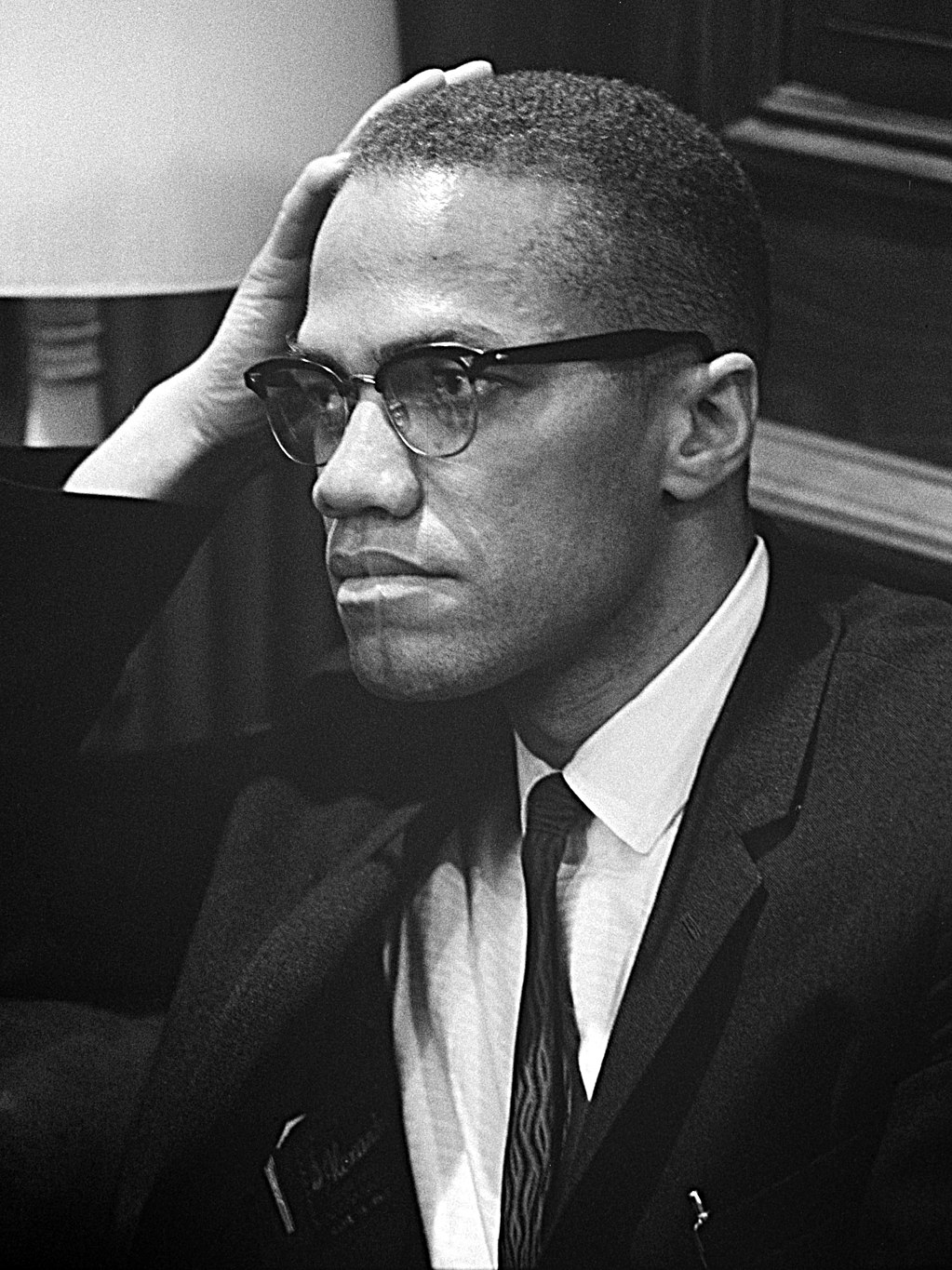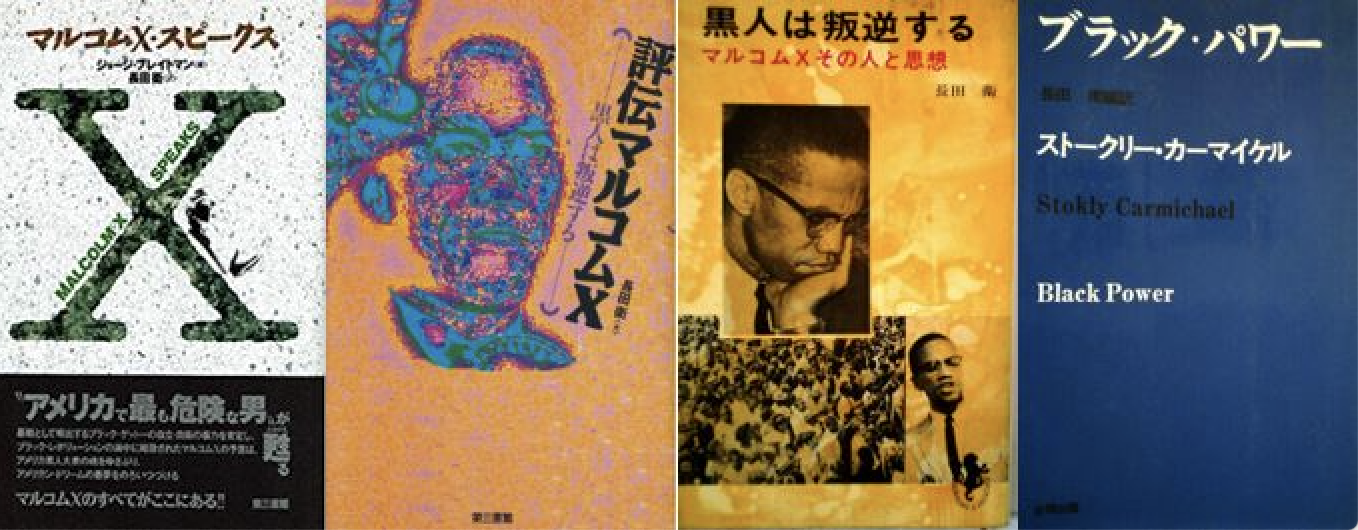On Feb 21, 1965, Muslim minister and human rights activist Malcolm X was assassinated by a group of gunmen while speaking in front of a crowd at the Audubon Ballroom in Harlem, New York. Malcolm’s death was flagrantly misreported, and as the 2020 Netflix documentary, "Who Killed Malcolm X," shows so convincingly, two of the men convicted, Norman 3X Butler and the late Thomas 15X Johnson (1), were not even in the Audubon that day. Even more insight into that fatal day has been provided by Les and Tamara Payne’s new Malcolm X biography, "The Dead Are Arising."
(1) The "X" number is based on first name and mosque. So 3X means that "Norman" was the 3rd Norman to join his city mosque. "Thomas" was the 15th Thomas.)

Over the years there have been many eyewitness reports describing Malcolm’s final seconds, but one important and vivid account has been all but forgotten. Ei Nagata*, then a 32-year-old Japanese journalist, was sitting with his wife “six or seven rows from the front, close to the center” of the stage, where Malcolm X was due to speak. Nagata, born in Kumamoto in 1933 and a 1958 Waseda University graduate, lived with his wife in a New York City apartment at the time and contributed articles to the Young Socialist, a bimonthly magazine based in New York City. His book on Malcolm X, "Kokujin wa Hangyakusuru" (roughly translated as "The Black Man Rebels: A Critical Biography of Malcolm X") first published in 1966, has never been translated into English, but was reissued in Japanese in 1993 during the release of Spike Lee’s film, "Malcolm X."
Nagata often came to listen to Malcolm speak in Harlem. Ever since returning from Africa in November 1964, Malcolm had routinely used the Audubon ballroom on Sunday afternoons to communicate his goals for the Organization of Afro-American Unity, or the OAAU.
When Nagata and his wife took their seats, he noticed that the crowd was “much fewer (zutto skunakata) than usual.” Malcolm had not yet entered the ballroom, so Nagata and the audience of between 200-500 (Nagata’s estimate was more than 500) listened to Malcolm’s assistant minister Benjamin 2X Goodman (Karim) extend his introduction: “Today,” Nagata quoted Goodman, “I assume Malcolm X is going to talk about the OAAU’s direction. Today’s speech will be very important so I’d like you to listen closely. There is no other leader but Malcolm who could risk his life to fight our fight.”
At nearly 3 p.m., long after he was scheduled to speak, Malcolm showed up, and he “walked toward the chair behind the podium and sat down.” Nagata stared at Malcolm as Minister 2X Goodman finished his remarks. Malcolm “had a black satchel, and he took out some documents and looked at them, sometimes looking out at the crowd and then back to his documents.”
After taking a breath, Malcolm started talking to the audience in a low voice. “Brothers and sisters.” At that time two rows straight behind us, two black men stood up and started arguing. One of them yelled at the other in a loud voice, “Do not touch my pocket, konoyaro / asshole.” The crowd started muttering across the ballroom. At the moment the audience’s attention went toward these two men, Malcolm’s voice was heard for the last time: “Be calm, brothers. Be calm. Everything will be okay…” Then it was right after that when a gunshot went off and the chaotic air broke the atmosphere in the hall. -- Ei Nagata's account, translated by Yuka Goto
After Minister 2X Goodman finished, Malcolm stood up, approached the podium, shook hands with Benjamin and then went to the microphone placed atop a rostrum. Nagata described how Malcolm seemed to tower over the mic. “Since his height is more than 6 feet, his upper body seemed to hover over the podium.”
Malcolm then, as was common, greeted the crowd by saying “As-salamu alaykum (peace to you).” Right after the last syllable, the crowd replied with “Wa ʿalaykumu s-salam (and unto you peace).” Nagata and his wife watched as Malcolm “took a breath and said “Brothers and Sisters,” in a voice lower than usual.”
It’s here where Nagata’s account becomes vital. “… two rows behind ours, two black men stood up and started arguing. One of them yelled at the other: “Don’t touch my pocket, (expletive/konoyaro).” Thanks in part to researcher Abdur-Rahman Mohammad’s decades of work tracking down information and delivering it to the general public, we can now say that the name of the man who caused the misdirection was named Wilbur McKinley, and that he was working together with at least two other gunmen sitting much closer to the stage — Talmadge Hayer and William Bradley, the latter of whom had a sawed-off shotgun under his coat.
This staged "pocket" distraction caused “the whole audience” to turn their heads and look at them. Nagata would later report that there were “four bodyguards standing straight below the podium” and that the distraction had “pulled the bodyguards toward them,” leaving Malcolm without protection. One of these bodyguards was Gene Roberts, an NYPD police officer working undercover.
Talmadge Hayer, the only man who would be rightfully arrested, then threw a smoke bomb. A short tape-recording clip has Malcolm then saying “Hold it! Hold it!” quickly and repeatedly (10 times total) toward the two men. Several audience members, including Nagata, remember that Malcolm said one more thing, moving somewhat away from the rostrum: “Be calm, brothers. Be calm. Everything will be okay… (gunshot).”
What Nagata described as a “shotgun” blast was most likely the shot that killed Malcolm X.
The moment the shotgun went off, most of the predominantly Black audience rolled onto the floor. Nagata and his wife did the same. “As the sound of gunfire went on like a volley — the sound bouncing off the ceiling and into both sides of the aisles,” Nagata remained numb on the floor. “I didn’t feel anything, neither terror nor shock. I only felt a desire to know what happened.”
When the gunfire stopped, Nagata recalled a woman’s explosive shriek of agony. Nagata glanced up at the podium. Malcolm was gone, and in his place stood a “wall of people,” one of them being Japanese American activist Yuri Kochiyama, a friend of Nagata’s.
What followed was pandemonium, but Nagata stayed low a moment longer. “There was one big black lady in front of me. She was on the floor on her back, crying and flailing. I’d never heard such an extreme crying sound. To this day, in my memory, this woman’s cry represents Malcolm’s death.”
Minutes later, Nagata and his wife stood up and walked over to a white friend. “Is Malcolm alive?” Nagata asked, but the man wasn’t sure. “I don’t know because I was on the floor. I don’t know anything.”

In his book, Nagata relies somewhat on what he later read in newspapers — that there were 30 gunshots in under 20 seconds, for example. But he also urges the reader to take all eyewitness accounts with a grain of salt. “There were no newspaper writers or cameramen at the scene, so reports would have all been based on eyewitness testimony.” Apparently, Nagata was never questioned by police. (Note: *There were actually two Black journalists, but they were told to hide their press credentials: Gene Simpson from WMCA radio and Stanley Scott from UPI News.)
Around “30 minutes” after the gunfire stopped, Nagata watched as several police officers “slowly” came in with a stretcher. “Two or three meters from us, Malcolm’s face passed us by. To me, Malcolm’s face was close to a dead man’s, but I couldn’t fully realize he was dead. I saw fresh blood from the center of his stomach, like a ring. Later, some newspapers reported that Malcolm was shot in the forehead. I cannot believe that was true.”
After Malcolm’s body was taken to an ambulance, it would have been a perfect time for police to talk to witnesses, but according to Nagata, “they did not ask any questions to the audience, and then they left.” Nagata was disturbed by their passivity. “To me, their actions were a formal on-the-spot inspection. I didn’t feel any passion out of them to deal with a midday murder incident.” Nagata also mentioned that the officers who came to the Audubon that day “were all white.”
Only after, as Nagata and his wife walked back to their apartment, did the “terror” hit him emotionally. “One has said that real terror would come to you slowly, not immediately. I realized that fully.”
Nagata would remember this “very professional, organized and experienced” assassination for the rest of his life. Due to his objective position — he was neither Muslim nor white or Black — Nagata’s account of that day is worthy of attention and should be placed on the historical record, especially now that the murder case is currently being reviewed by Manhattan District Attorney Cyrus Vance, progress at a standstill due to the ongoing pandemic.
Re-examining this tragedy would provide the family of Malcolm X (his six surviving daughters) much-needed answers into how and more importantly why Malcolm was killed. Reopening the case would also help to absolve Norman 3X Butler — alive and well at 82 years old — from any wrongdoing and provide him with a sense of justice after serving 20 years in prison.
Author's note: Ei Nagata is a pen name, and he has proved difficult to find. I did send a letter to the Tokyo address printed in the 1993 reissue of his book, but the post office returned it.
Patrick Parr is the author of One Week in America: The 1968 Notre Dame Literary Festival and a Changing Nation (March 2021). His previous book is The Seminarian: Martin Luther King Jr. Comes of Age, now available in paperback.
© Japan Today Take our user survey and make your voice heard.
Take our user survey and make your voice heard.















4 Comments
Login to comment
dbsaiya
Thank you for this article, it is much appreciated.
Sneezy
Nagata sounds like a cool dude.
Terrible that Malcolm was assassinated like this.
oldman_13
Yuri was a friend of Malcolm X, and it was her that was cradling his head on the cover picture of the incident on Life Magazine. Interestingly, the Spike Lee movie "X" did not feature Yuri or Nagata in the scene.
u_s__reamer
Around “30 minutes” after the gunfire stopped, Nagata watched as several police officers “slowly” came in with a stretcher.
After Malcolm’s body was taken to an ambulance, it would have been a perfect time for police to talk to witnesses, but according to Nagata, “they did not ask any questions to the audience, and then they left.” Nagata was disturbed by their passivity. “To me, their actions were a formal on-the-spot inspection. I didn’t feel any passion out of them to deal with a midday murder incident.” Nagata also mentioned that the officers who came to the Audubon that day “were all white.”
The above quotes are testimony enough to remind us how ugly things were back then in America for black Americans who refused to play along and be their Negro, as James Baldwin so bitingly put it.
With his commanding presence charismatic Malcolm X, feared and reviled in his day by whites, spoke for the disenfranchised and will be remembered in history as one of the greatest American orators of the 20th century who insisted that white America should listen to what it did not want to hear: BLM